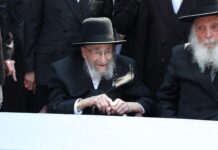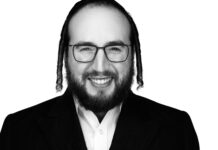Considering the sad state of Holocaust knowledge in the US—a 2020 Pew Research study found that, asked what “the Holocaust” referred to, a mere 66% identified it as the attempted annihilation of Jews, and a full 10% gave no answer at all—it’s laudable that 20 House members, from both parties, have advocated for “the highest possible funding” in 2025 for the Never Again Education Act.
That 2020 law, which passed by a 393-5 vote in the House and unanimously in the Senate, provides funding and resources for Holocaust education efforts through the US Holocaust Museum.
Already promoting awareness of the Holocaust are the 26 states that require Holocaust instruction in public schools. It has been a staple of many elementary, middle and high school curricula since the 1970s.
Clearly, though, the effort to educate Americans about the hate-born evil that engulfed much of Europe in the 1930s and 1940s has been something less than a resounding success.
Some have criticized dwelling on the Holocaust without concomitant focus on other attempted genocides, like the Cambodian one in the 1970s or the Rwandan and Bosnian ones in the 1990s.
There is, though, something that makes the Holocaust uniquely worthy of educational focus: that the hatred that spawned it still belches forth in contemporary societies. Not only in the Arab world—where anti-Semitism is angrily preached from the pulpits of mosques, peddled in bookstores and taught in schools, and where groups like Hamas, whose original charter endorses “killing the Jews,” are celebrated—but in the West as well. The anti-Israel frenzy that has inflamed some American college campuses is clearly animated by animus toward the world’s only Jewish state, and, in many cases, toward the world’s only Jews.
We believing Jews know that hatred for our people is simply ingrained in some people.
“It is a well-known halachah that Eisav hates Yaakov,” the famous midrash states. All of Eisav’s spiritual descendants express that “law.”
That said, there are certainly people who are not constitutionally committed to anti-Semitism yet vulnerable to being infected with the disease. Is Holocaust education the way to inoculate them?
I think not.
Because the Holocaust is but a symptom of a larger sickness. What needs to be presented in classrooms is the long, sordid and broader history of Jew-hatred itself. With the Holocaust as a part of the lessons, yes, but only a part.
Because, while the Holocaust may be the most shocking manifestation of Jew hatred in recent memory, it exists on the spectrum of anti-Semitism over the ages.
That evil has expressed itself in varied societies and assumed many guises, but its mark has always been the same.
The ancient Greek may have dedicated himself to science, art and beauty; he hated the Jew. The medieval Crusader championed the message of his faith (peace and love of mankind, no less); he hated the Jew. The Nazi may have claimed a desire to raise up his nation, but it was the Jew, beyond all else, whom he hated.
And, likewise, the militant Arab actors and history-ignorant young collegiates may oppose what they call Zionist colonization; but, once again, it is the Jew who finds himself in the crosshairs.
Anti-Semitism is as irrational as it is historically ubiquitous. There are not and never were any conspiratorial Elders of Zion, no Jewish ritual drinkers of Christian (or Muslim) children’s blood, no Jewish desire to hurt or displace innocents and no Jewish designs on world domination. And Israel is engaged in self-defense, not genocide.
What young Americans need to be taught is that anti-Semitism is not confined to any time, place or happening. They need to be confronted with the full scope of the ugliness and irrationality of the world’s oldest hatred, not just one recent, if horrific, manifestation of it.
Will that end anti-Semitism? No. But it might help future generations see it as something that includes the Holocaust but transcends it as well, that stretches far behind it into the past, and entirely into the present.
To read more, subscribe to Ami





















